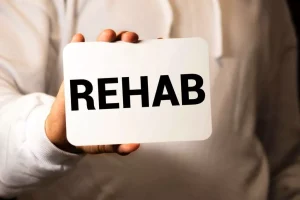
The framework can give you language to use when describing gaps in service. Your input can be invaluable in helping mental health care providers shift toward the values outlined by this model. Exhibit 1.3 displays the relationship among the five stages (i.e., Precontemplation, https://ecosoberhouse.com/article/how-to-cope-with-loneliness-during-addiction-recovery/ Contemplation, Preparation, Action, and Maintenance) in the SOC approach in the original TTM. As the addiction treatment field has matured, it has tried to integrate conflicting theories and approaches and to incorporate research indings into a comprehensive model.
We offer individualized, extended-term treatment in an intimate setting.
- MET recognizes that ambivalence and lack of motivation are common barriers to seeking.
- Identify the root causes of a lack of motivation and address underlying issues.
- Sober support networks are also available and consist of peers in recovery.
- Recovery is a journey, and that means there will be bumps along the way.
The road to addiction recovery can be a long journey, as you may experience obstacles and setbacks that make lasting life transformation difficult to attain. It can be hard to find healthier coping strategies when stress, tough circumstances, or triggers arise, for example. Others face the challenges of adjusting to the real world or recovery motivation going back home after their treatment ends. While pursuing recovery, you may experience heightened struggles with your co-occurring disorders, making each step to self-improvement all the more taxing. These challenges increase the likelihood of a relapse along the way as you’re tempted to revert to old habits in the recovery process.
FAQs about The Science Of Motivation In Addiction Recovery: How To Stay Motivated When The Going Gets Tough

The recovery model offers the personal empowerment and peer support that people need to cope with their illness and work toward getting better. A number of programs, including the Wellness Recovery Action Plan and the NAMI Family-to-Family program, incorporate both models and have research to back their effectiveness. Today, the concept of the recovery model is familiar to most mental health practitioners. But individuals are still working out how to design programs and treatments based on these principles.

Develop a Structured Schedule
For motivation, people should surround themselves with positive influences and supportive networks. Sober support communities offer resources such as success stories, inspiring quotes, and shared experiences. Being of service to others in recovery can also foster a sense of purpose and strengthen one’s commitment to sobriety. Both extrinsic and intrinsic motivation play a role in addiction recovery.

What Is Intrinsic Motivation?
- From writing down your thoughts and goals to seeking support from loved ones and the recovery community, we’ll cover various approaches that can help you overcome challenges and triggers.
- Addiction can take a toll on physical and mental health, harming organs such as the brain, liver and lungs.
- Within the group setting, participants can openly discuss their challenges, achievements, and setbacks, knowing they are in a judgment-free zone.
Consider the Costs of Drug Use
Importance of motivation in addiction recovery
- However, many rehab centers in the United States can help people overcome substance use problems and co-occurring disorders.
- The separation of SUD treatment from mainstream healthcare services has created obstacles to successful treatment and care coordination.
- Here are some strategies to help you reignite your motivation in your current work.
- It is easy to lose hope and slip into relapse without the proper motivation to keep you striving for a brighter future.
- Getting started with addiction treatment may feel intimidating at first.
